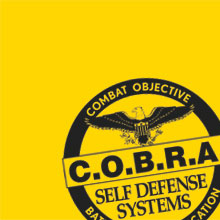
The Martial Arts industry serves only around three to five percent of the population. Yet, almost everyone is interested in some form of personal safety, security and self-defense for themselves, their family and children. The martial arts have great benefits, but also teach a lot of skills besides self-defense. When taking a martial arts class, you are learning about history, culture, forms, breaking boards, traditional weapons from 500 years ago and there is also the sports category of training that is very popular. These sports might include BJJ, Kickboxing, Muay Tai and Wushu, to name a few. What if you don’t have an interest in learning a martial arts system but are interested in reality based modern day self-defense? So what is the difference? (Underneath is a brief summary of some pages from our book “The Psychology of Self Defense” by Chris Sutton”)
What is the Difference Between Martial Arts and Self Defense?
The difference between martial arts and self-defense training is a huge subject. In general, the two are completely different – and yet they are exactly the same. This is a hard concept for many people to understand. Since I’m both a martial arts school owner and a self-defense instructor, I completely understand the differences. But many do not. Many confuse the two. This confusion may stem, at least in part, from the fact that in the beginning, martial arts and self-defense were one and the same. Although some are more recent, many martial arts have been handed down for hundreds or even thousands of years. Those who wanted to survive had to know how to defend themselves, by killing other human beings when necessary. In other words, martial arts were the original “self-defense.”
Martial Arts Sports
Today, many martial arts focus on sport. Sport, by definition, includes knowledge of one’s opponent, a preset time and place, no deadly weapons, time limits, safety equipment, points, prizes, titles, referees, fair weight classes, and many other rules. Not that there’s anything wrong with sports. The martial arts in particular emphasize the long-term pursuit of physical and mental excellence. If your goal is to be a point tae kwon do stylist, you’ll want to train to be good at point tae kwon do. If you’re going to be an MMA cage fighter, you need to train for that. If you work hard and you’re good at whatever sport you choose, you’re going to win a lot of trophies, and you can feel good about that. But understand that they are sports.
Here’s an example to think about: Sport and self-defense are as different as:
• going to the gun range and shooting targets (SPORT)
– and –
• being in an actual shoot out (REALITY)
Is your Brain Ready for Self Defense?
If you’ve trained only on the level of sport, without an added element of reality, when primal fear hits, everything you’ve learned will go right out the door. Your mind has to get used to real-life scenarios. Without that, the training doesn’t link when it’s carried over into a real-life situation. It doesn’t matter how much you hit a bag, or break boards, or condition your body – if you’ve never experienced a fight realistically in your mind, the link isn’t there, and the training has poor carry-over. A real-life fight is nothing like a martial arts competition. Your brain shuts you down or distorts your skill set when it encounters something new and unfamiliar.
Reality Self Defense Training
That’s why, to be effective, self-defense training must include stress inoculation and frag drills, auditory and visual exclusion training, attention diversion drills, and real-life (professional) scenarios. Robberies, burglaries, attempted rape, battery, bullies, weapons – all these can be simulated in training. This gives your brain the “link” it needs to put your excellent martial arts skills to use. It’s what makes your skills “battle ready.” This is why self-defense instruction today is often completely different from a martial arts program.
No Martial Arts Uniform – Street Cloths
Instead of the traditional martial arts uniform (called a gi), students are wearing a t-shirt, shorts and tennis shoes. And the focus is on learning effective techniques that students can carry outside that day and use immediately. When you walk out the door after a self-defense class, you might not be in any better shape, and you may not have been studying for years, but you have something you can use right away. Something that if you’re in the mall, or walking out to your car, or you go home, and someone attacks you, you can immediately use it. In situations like that, you don’t have time for years and years.
After Self Defense, Then Martial Arts
After some reality based self defense training then it is good to refine specific skills and go into a martial arts program if desired. Make sure within that program, you can integrate forms of reality-based training, now that you have a reference of what that means. Also look for a martial arts system that teaches all ranges of combat. For empty hand that would include; long kicking, long striking, close quarter and grappling.
For more information, call us at 201-556-9799 or email mvptkd@gmail.com

